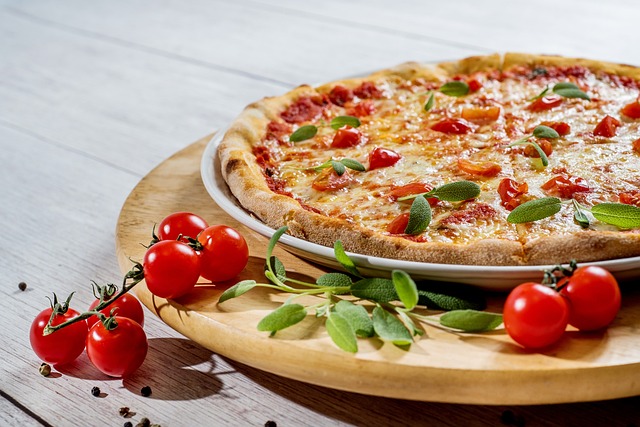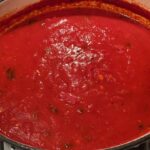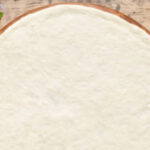In the realm of beloved comfort foods, pizza holds a place of honor, cherished worldwide for its versatility, flavor, and undeniable appeal. However, amidst the enjoyment, health-conscious individuals often pause to consider the nutritional implications of their favorite dishes, leading to the pivotal question addressed in our article, “Is Pizza High in Cholesterol?” This exploration dives deep into the heart of pizza’s nutritional profile, examining the ingredients and cooking methods that contribute to its cholesterol content.
By establishing expertise on the topic, this article is designed not only to answer the pressing question of pizza’s cholesterol content but also to provide readers with the knowledge to make informed dietary choices. Whether you’re a pizza aficionado concerned about heart health, someone managing cholesterol levels, or simply curious about the nutritional aspects of different foods, “Is Pizza High in Cholesterol?” offers valuable insights.
Understanding Cholesterol and Heart Health
Cholesterol is a wax-like substance that circulates in the blood and impacts heart health. Not all cholesterol is equal.
LDL cholesterol deposits on artery walls. This buildup narrows arteries and increases heart disease risk. Hence LDL’s nickname of “bad” cholesterol.
HDL cholesterol removes LDL buildup in arteries, acting as “good” cholesterol. Higher HDL levels correlate with lower cardiovascular risk.
While cholesterol in food does raise blood cholesterol levels, studies show saturated and trans fats trigger significantly greater increases in LDL cholesterol than dietary cholesterol itself.
Limiting intake of saturated fat from sources like red meat, full-fat dairy, and eggs helps manage LDL levels. Pairing these foods with vegetables, fiber, and unsaturated fats further minimizes their impact.
Is Pizza High In Cholesterol?
So where does pizza come in regarding cholesterol and fats? Pizza can certainly be high in saturated fat, especially with fatty meats and cheeses. But enjoyed reasonably, it likely poses little risk to heart health. Habitual overconsumption is where trouble arises. Moderation and mindful ingredient choices are key.
Nutritional Breakdown of Pizza
Pizza ingredients differ greatly regarding heart health impacts. Understanding these components empowers you to identify or create better options.
Crust: Thin or cauliflower crusts cut down on refined carbs and fat versus thick, buttery pan pizzas. Whole wheat adds fiber.
Cheese: Regular mozzarella piles on saturated fat. Lower-fat shredded or part-skim options are better. Go light on extra cheese.
Sauce: Basic pizza sauce adds little fat or cholesterol, while cream-based sauces pack a heavy saturated fat dose.
Meats: Sausage, pepperoni and bacon spike sodium and bad fats. Lean options like grilled chicken or shrimp make smarter protein picks.
Veggies: Spinach, peppers, onions and mushrooms boost nutrients without the cholesterol.
So a thin-crusted veggie pizza with part-skim mozzarella amounts to a balanced meal, while a deep dish meat-lover’s still requires caution.
The Rise of Plant-Based Pizza Options
The growing popularity of plant-based ingredients provides pizza options with less cholesterol:
- Cauliflower crusts swap refined dough for fiber-rich vegetable. Watch added rice flour carbs though.
- Nutritional yeast cheese mimics melty, creamy texture with significantly less fat by utilizing yeast and nuts.
- Plant-based meats like soy crumbles match ground beef texture with fewer calories and no cholesterol. Jackfruit stands in for pulled pork.
- Veggie toppings bulk up pies while avoiding fatty meats.
Read on to learn more : How Many Slices In A 16 Inch Pizza? Plan Perfect Portions
The biggest benefit of plant-based pizza is slashing saturated fat and cholesterol from cheese and meat. For the health-conscious pizza lover, these alternatives are game changing.
Making Heart-Healthy Pizza Choices
Pizza night doesn’t have to derail heart health. Consider the tips below for both takeout and homemade pies:
Ordering Out
- Opt for thin over pan, stuffed or deep dish crust to save carbs and fat.
- Choose light cheese blends or part-skim mozzarella instead of regular.
- Load up vegetable toppings like spinach, onions and mushrooms over meats.
- Add proteins like chicken or shrimp rather than bacon or sausage.
- Use sparingly or skip cream-based sauces, cheese blends which are high fat.
- Select marinara over white sauce, with less than half the saturated fat.
- Inquire about preparation. Baked is better than fried or oiled.
- Go for small or medium pie over large which is hard to manage portions.
- Pair with a side salad for added veggies and fiber.
Quiz yourself before ordering – do your choices align with heart health goals? If not, reevaluate crust, toppings and portions.
Crafting Your Own Pizza

Making pizza at home allows full control over ingredients for heart health.
Base: Pick thin whole wheat or low-carb cauliflower crust. Make your own or use pre-made crust to simplify.
Sauce: Choose tomato-based over creamy. Make your own or find low-sodium jarred.
Cheese: Use part-skim or low-fat mozzarella. Measure it instead of cover the pie.
Veggies: The more, the better. Try spinach, onions, broccoli, mushrooms, peppers.
Plant-based meats: Add soy crumbles, jackfruit or mushrooms for hearty texture without the cholesterol.
Avocado: Use instead of cheese for creamy richness with healthier fats.
Fresh herbs: Boost flavor with oregano, basil, garlic instead of excess salt.
Finally, watch portions. Make individual pizzas instead of large ones prone to overeating.
The Psychological Benefits of Pizza
Pizza is undeniably craveable. Depriving yourself can backfire mentally and emotionally.
Allowing indulgences in moderation prevents feelings of restriction that lead to overdoing it later. Find balance between health needs and food enjoyment.
Research also shows social eating benefits mood and relationships. Bonding over pizza in reasonable amounts has psychological perks.
It’s important to recognize pizza’s role in family traditions and cultural identity. With intention, you can honor those bonds while optimizing health.
Reading Labels and Ingredients for Store-Bought Pizza
Store-bought pizza makes quick meals, but read labels to choose options aligning with heart health:
- Check serving sizes to manage portions. Nutrition facts are per serving.
- Limit saturated fat ideally under 5g per serving to avoid raising LDL.
- Note sodium levels and aim for under 300mg per serving. High amounts often indicate processed meats.
- Watch added sugars and look for under 5g per serving. Dessert pizzas pile on sugar.
- Scan ingredients lists. Better signs are “whole wheat crust”, “light cheese”, “veggie crumbles” versus “enriched flour”, “extra cheese”.
Read on to learn more : What Is Marinara Pizza Sauce? Sauce Perfect for Pizza
Applying label reading basics helps identify the most heart-healthy frozen and take-and-bake pizza options.
Cultural and Social Aspects of Pizza
For many, pizza carries cultural and personal significance. It frequently appears at parties and gatherings.
Strategies to balance health and social needs:
- Eat before arriving so you don’t dive in ravenous and overeat.
- Fill your plate with salad or sides first, then add one moderate pizza slice.
- Stick to thin crust veggie slices. Avoid pan or deep dish.
- Pick off and skip eating high-fat meats like pepperoni and sausage.
- Stop after 1-2 modest slices then switch to water.
- Bring a healthier side or dessert to share.
It’s about being mindful without deprivation. You can balance health with continuing to enjoy pizza’s social and cultural roles.
Seasonal and Regional Pizza Flavors

Pizza takes on delightful seasonal and regional variations. With intention, these can align with heart health:
Summer – Swap meat for shrimp, zucchini, basil, arugula.
Fall – Butternut squash, caramelized onions, sage and apple combine well. Go easy on the cheese.
Winter – Favor vegetable-loaded pies and limit rich cream sauces.
New York style – Fold a thin slice to drain excess grease. Stick to 1-2 slices.
Chicago deep dish – Share this high-fat option and fill up on salad first.
California style – Load up veggie toppings on a thin whole wheat crust.
Neapolitan – Make a personal sized margherita pizza with light mozzarella.
Navigating the Food Industry: Standards and Legislation
Food industry practices also impact pizza’s nutrition. As an aware consumer, you can navigate this:
- Delivery app deals promote overordering – split or customize orders to control portions.
- Chain restaurants aren’t required to offer nutritionally balanced options – choose carefully.
- FDA labeling regulations allow high sugar, salt and fat foods to claim “healthy” status with creative labeling – read ingredients lists, not just fronts of packages.
- Food industry lobbyists sway Congress against bills limiting sodium and added sugars – voice support for stronger regulations around these.
While the food industry strongly markets indulgent pizza, you have power to direct spending toward healthier offerings.
Conclusion: Is Pizza High In Cholesterol?
Pizza holds a special place in many hearts and cultures. With knowledge and moderation, it can also fit into a heart-healthy lifestyle.
Be selective with toppings and portions. Supplement with salad. Make veggie-packed pies at home. Allow yourself reasonable indulgences. And focus on your overall daily diet patterns.
Rather than cutting out beloved pizza, learn to thoughtfully incorporate it while promoting cardiovascular wellness. With balanced choices guided by nutrition science, you really can have your pizza and eat it too – both happily and healthily.

Chef John Sebastian has been cooking up a storm at his simple place for years. Offering a variety of international foods, Chef John Sebastian has something for everyone- and he makes it all look easy!
He’s been featured in various food magazines and cooking shows, and his restaurant has become a local favorite in the community. When he’s not in the kitchen, Chef John Sebastian enjoys spending time with his family.









